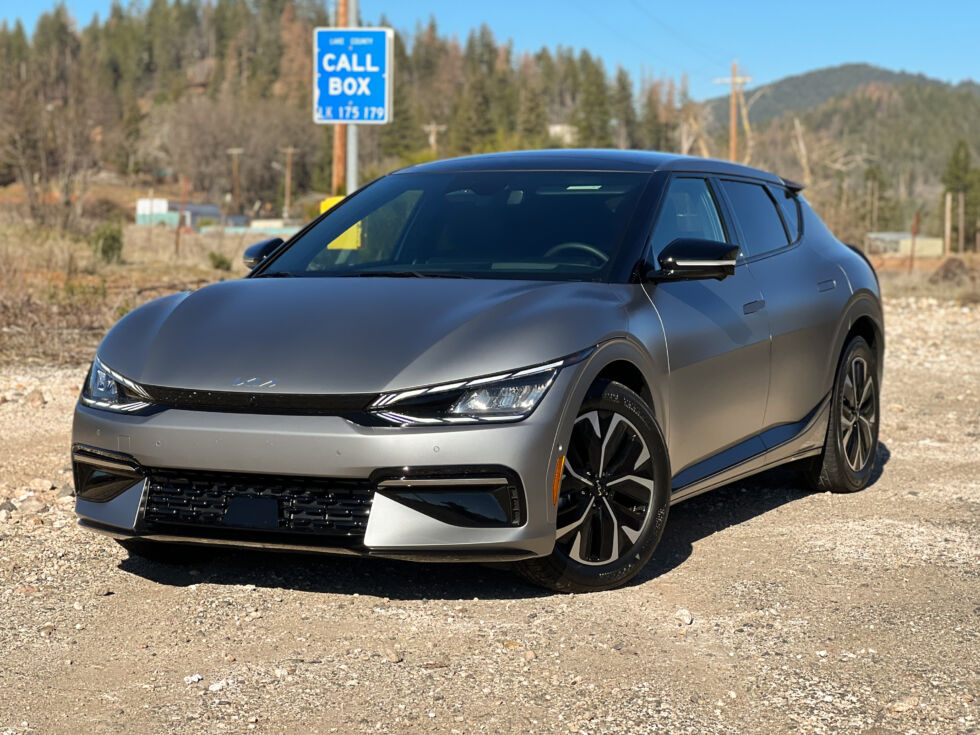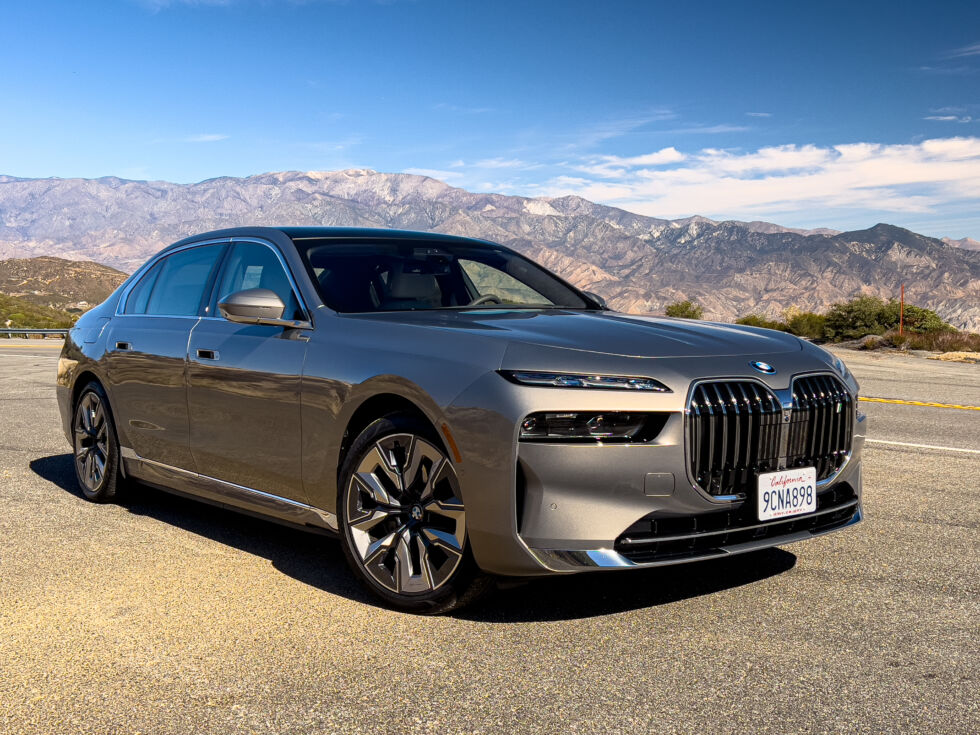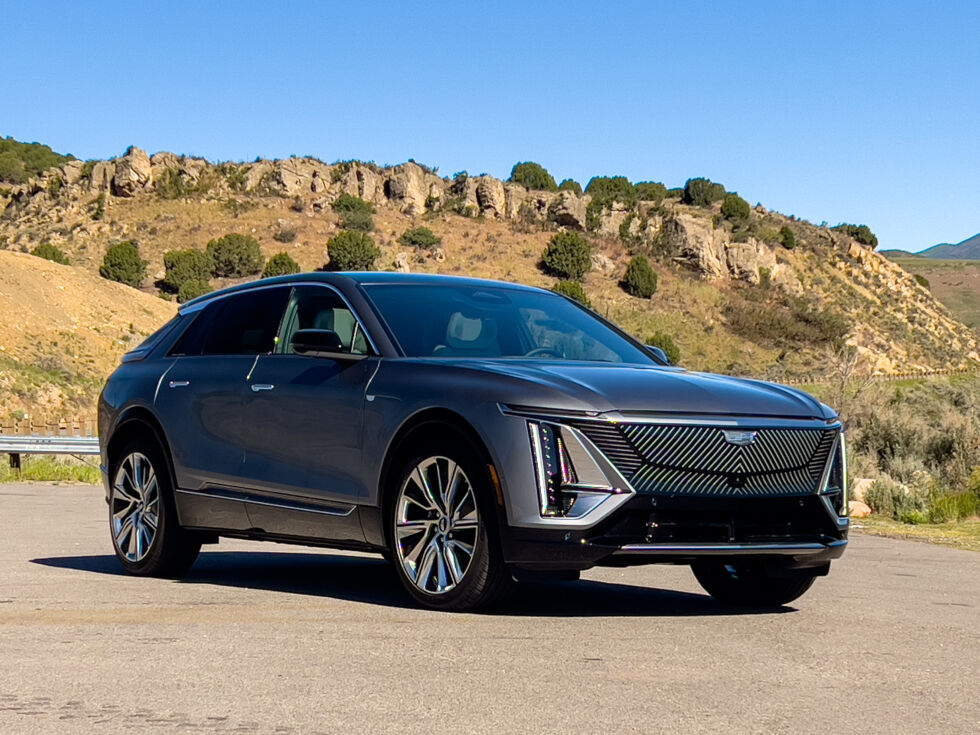It's time to think about all the vehicles we tested in 2022. Comparing this year with past years, the number of electric vehicles on the list is remarkable. This is partly because the industry has released some pretty compelling new EVs this year, but it's also a reflection of our reporting priorities. In the past, you've clearly told us that you're not that interested in reading about new petrol and diesel models. Read on to find out what impressed you most about 2022.
1. Kia EV6

Our winner is the Kia EV6, one of the first cars we actually tested this year. It uses his new 800 V EV architecture called E-GMP and is shared with last year's winner, the Hyundai Ioniq 5. It offers impressive levels of efficiency for larger, heavier EVs, while boasting the fastest charging speeds in the industry. 10-80% to 18 minutes with a 350 kW charger. Despite its shared roots, Kia runs very differently compared to his angular Ioniq 5 and has sportier qualities. Unlike Hyundai, the EV6 is sold in all his 50 states. Sadly, Kia dropped its cheapest configuration from its roster this year: the $40,900 EV6 Light, which used a smaller battery and motor but only made up about 3% of customer orders, according to the company. Earlier this month we got a chance to test the other end of the spectrum, the $61,400 EV6 GT. This is very fast, but may be overkill.
2. Ford F-150 Lightning

It was a close race between the EV6 and the F-150 Lightning, Ford's new electric version of the best-selling F-150 pickup. For years, the F-150 has been America's most popular pickup, and aside from a few subtle details, it would be hard to distinguish the EV version from his hybrid and internal-combustion F-150. . But the Lightning may just be an option. Its electric powertrain is far more efficient than the fossil-fuel-burning F-150, and because it doesn't require the engine to be stowed under the hood, Ford doesn't have a trunk. I was able to set up a large storage space with a key on the front of the. Lighting is designed as a work truck and can use batteries to power your jobsite or home. However, it may not be so easy to get your hands on. According to Ford's website, "Due to high demand, the current model year is no longer available for retail orders." Since driving the truck in May, the OEM has raised the price of the cheaper model several times. It's his F-150 based. The Lightning Pro, which started at just under $40,000 before the summer, is now at least $55,974, and the XLT version, which will be the entry point for retail customers, has increased its price by $10,500 to $63,474.
3. Genesis GV60

When we reviewed the Genesis GV60 back in August, we boldly declared it a strong contender for Car of the Year, but in the end, the more equal Kia and Ford came in third. Like the Ioniq 5), the GV60 uses the E-GMP platform. This means great efficiency and very fast charging. The exterior styling might be a bit controversial, but the interior is really nice.
Genesis has put some pretty interesting tech into the car, like the ability to use biometrics instead of a key fob to unlock it, and its suite of advanced driver assistance systems is very effective. The performance version has a nominal power output of 429 hp (320 kW), increasing to 483 hp (360 kW) in short bursts via the boost button. That's $68,290, or $59,290 if you can make do with a less powerful version of 314 horsepower (234 kW).
4. Volt EUV

A frequent complaint in recent comments is about the continued rise in the price of electric vehicles in the United States, but there are still some relatively affordable EVs available. Mini Cooper SE, Hyundai Kona Electric and Nissan Leaf come to mind. But the most affordable EV on sale today is the Chevrolet Volt EV, starting at just $25,600. With Chevy's scattered press fleet, we haven't had a chance to drive the refreshed Bolt EV yet (which should happen in 2023). The Volt has always been impressive when it comes to range efficiency, and the Volt EUV has managed to maintain that reputation. It features an excellent one-pedal driving mode and can also be configured with Super Cruise, a hands-free assistance system that is effective for highway driving. The only thing I could complain about was the speed of the DC fast charging. Only 55 kW.
5.BMW i7

BMW's new i7 was one of the new products of the year. I didn't expect it to be this good at all. The Bavarian automaker has made the bold decision to release an electric version of its new 7 Series alongside a fossil-burning version. That's because the electric powertrain is smooth, quiet and extremely torquey, with all the attributes you'd expect in a luxury sedan like the 7 Series. A more attractive driver's car than its rivals such as the Mercedes-Benz EQS, Tesla Model S and Lucid Air, the on-board technology is cutting-edge, with an excellent augmented reality system and new hands-free driving assistance that is restricted and geofenced. Etc. He has freeway access, and one of the best infotainment systems on the market. I'm also a big fan of the cashmere interior as an alternative to leather, but perhaps the biggest surprise factor is his optional 31.3-inch 8K rear display that folds down when not in use.
6. Cadillac Lyric

2022 was the year we got our first taste of General Motors EVs, powered by General Motors' new Ultium batteries and Ultium Drive motors. The first is the over-the-top Hummer EV designed to appeal to those who think EVs are silly. But a few months later, it's time to test the much better (and more efficient) $62,990 SUV, the Cadillac Lyriq. It's a handsome looking machine that incorporates an interesting light panel in the nose and a bustleback hatchback reminiscent of Seville. The technical level is also quite high. The main instrument display and infotainment system are on the same 33-inch screen, and unlike the Lucid Air and Mercedes Hyperscreens, Cadillac's displays are three combined under a single pane of glass. It's actually one continuous display instead of one.
Lyriq also uses the new Android Automotive-based operating system with Google's voice assistant, and is the first car I've driven to cast directions from both Apple Maps and Google Maps from my iPhone to the main display. did. The driver (in addition to or instead of displaying that information on his CarPlay or Android Auto on the infotainment side of the screen. Like the F-150 Lightning, the Lyriq's biggest problem is availability. Despite ramping up production for the 2023 model year, Cadillacs quickly sold out.
7. VW ID.Buzz

Volkswagen's ID has generated a great deal of reader interest. Buzz electric van every time we write about it. The U.S. version is still a few years away, but this year we were able to try the shorter wheelbase, two-row, Euro-spec Baz. It's definitely an eye-catching EV, generating quite a bit of buzz from pedestrians and other road users, no doubt helped by the striking (and optional) two-tone livery. The European version isn't perfect - no windows in the back that open, you can use the rear vents, and the second row seats aren't removable - hope VW addresses this between now and the US launch All things in the infotainment system also suffer from the same lag seen in the ID.4. This is another issue that needs to be resolved by then. It may sound like a far cry from the hype, but it was an EV that was very easy to drive, had good visibility and a good turning circle. And really, just watch it!
8/9. Ferrari 296 GTS and McLaren Artura

We drove the first electric supercars from Ferrari and McLaren this year in the form of the new 296 GTS and Artura plug-in hybrid. Like the EV6 and the F-150 Lightning, I find it hard to choose between two mid-engined cars that I prefer.
Both represent blank slate designs for their respective manufacturers, ditching the high-capacity V8 engine for a twin-turbo V6 complemented by an electric motor. Both can only go a few miles considering they use a 7.4 kWh traction battery, but they can run on electric power alone.

The McLaren isn't much more powerful than the Ferrari, but the Artura is also $136,139 cheaper and has far less confusing ergonomics than the 296 GTS and its multi-function capacitive steering wheel. Ferrari, on the other hand, has to maintain its value more than the British supercars.
10. Mercedes-Benz EQXX

The final place in my top ten is concept cars. This is probably cheating, but as the concept goes, this is very well developed and should be seen more as a tech demonstrator than a styling exercise. It's a Mercedes-Benz EQXX, a super-efficient EV that can drive 747 miles (1,202 km) on public roads on a single charge of his pack with a 70.2 kWh (usable) battery. It's an air cooled battery. Without too much effort, I hit 7.44 miles/kWh (8.35 kWh/100 km) on the EQXX at Mercedes' test track in Inmengen, Germany. This is thanks to his UI that provides effective cues to help you drive more efficiently. The interior of the EQXX uses highly innovative materials such as cactus and bamboo fibre. What makes the EQXX appropriately interesting is that its powertrain tech is destined to be in an entry-level electric Mercedes scheduled for 2024, rivaling cars like the Tesla Model 3 and BMW i4. is intended as
